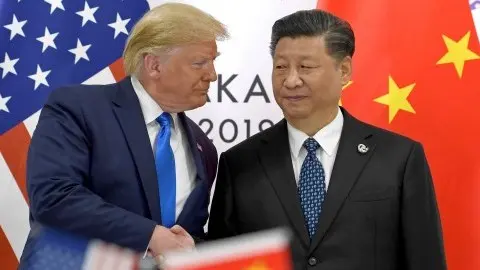OPEC+ cuts extended
This has certainly been one of the less exciting OPEC+ meetings, with President Putin spoiling the surprise on the side-lines of the G-20 summit. The commitment of OPEC+ to bring the market back to balance by extending cuts should be viewed as constructive, and we continue to hold the view of higher prices from here for the remainder of the year
What was agreed?
It seems to have been an easy decision for OPEC+, extending production cuts of 1.2MMbbls/d by 9 months, which would take the current deal through until the end of 1Q20. The length of the cuts was one surprise for the market, with the general consensus in the lead up to the meeting that cuts would be extended through until the year-end. However, given that the next OPEC+ meeting will be in December, the group will have the chance to review the deal and make any necessary changes.
As we saw with the deal over the first half of the year, it is likely that Saudi Arabia will continue to carry the bulk of cuts. The Kingdom over-complied with the deal over 1H19, with production averaging around 9.88MMbbls/d compared to their quota level of around 10.3MMbbls/d. Looking ahead, there are suggestions that the Saudis will continue to cut more than needed, with reports that they would produce on average a little less than 10MMbbls/d for the remainder of the year.
The Saudis are also keen to adjust the target of where they want to see global inventories. In the past the aim of OPEC was to bring oil inventories back in line with the 5-year average, however, the Saudis appear as though they want to go even further by bringing inventories back to the 2010-14 average. This, however, does not seem to be a view which is shared by other members, with them more reluctant to commit to such an aggressive target.
Why is OPEC+ cutting into 2020?
There are a number of reasons why OPEC+ have extended the deal into 2020, firstly Q1 is seasonally the low point in demand, and so there is the possibility of further stock builds if members were to increase output.
Secondly, there is growing consensus that the global balance looks more than comfortable next year, with the IEA in their first forecast for 2020 estimating that non-OPEC supply will grow by 2.3MMbbls/d, while demand is forecast to grow by 1.4MMbbls/d over the year. However, we do believe that the IEA may be a bit optimistic about their supply growth numbers for 2020.
Then on the demand side, there is still plenty of uncertainty. Demand growth forecasts for 2019 have been revised lower a number of times already this year, with the IEA initially forecasting that demand would grow by 1.4MMbbls/d this year, and now their latest expectation is 1.2MMbbls/d. However, a key determinant behind demand growth is going to be how trade talks between China and the US play out. Whilst the conclusion from the G-20 summit was fairly constructive, with both sides set to resume talks, we are still some distance away from a deal. Therefore the longer uncertainty around trade persists, the more concern we are likely to see around oil demand growth.
Prolonged cuts...yet market sells off
The market certainly has not reacted in the manner that OPEC+ members would have liked, with the market already giving back all of Monday’s gains and more. We believe a key reason behind this weakness is continued demand worries, whilst the market is also likely concerned about why OPEC+ are needing to extend cuts into 2020 - slowing demand growth, along with expectations of robust non-OPEC supply growth. Then there is also the issue of how sustainable these cuts will be in the longer term, given that US producers will be more than happy to fill the void left by OPEC+ cuts.
Saying this, we continue to hold a constructive view of the oil market for the remainder of this year. We are forecasting that prices will firm from current levels, with ICE Brent averaging US$69/bbl over Q3 and US$73/bbl over Q4. We should see a seasonal pick-up in demand over Q3, and this combined with continued cuts from OPEC+ and further declines from exempt Venezuela and Iran should see a tightening in the global oil balance. Furthermore, lingering tensions in the Middle East should continue to offer some support to the market.
This publication has been prepared by ING solely for information purposes irrespective of a particular user's means, financial situation or investment objectives. The information does not constitute investment recommendation, and nor is it investment, legal or tax advice or an offer or solicitation to purchase or sell any financial instrument. Read more
Download
Download article
2 July 2019
In case you missed it: The land of lower rates This bundle contains 10 Articles